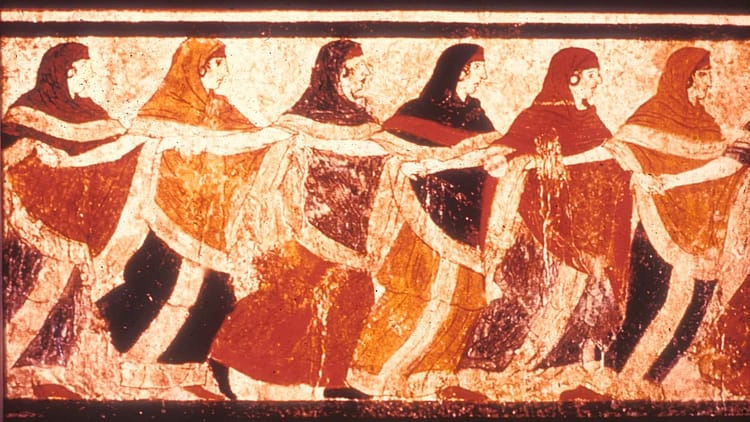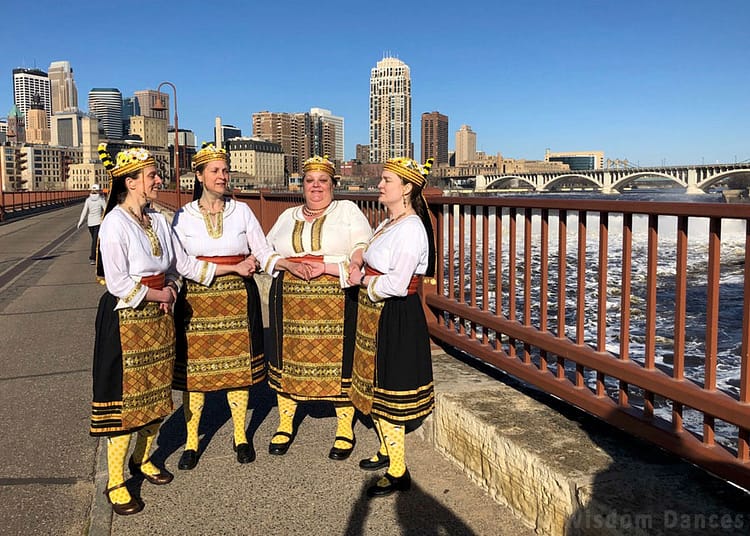At age eighteen I attended the 1995 NGO Forum on Women in Beijing, China. I combed through the catalog of thirty concurrent sessions looking for the one that would offer me the best solution for world peace.
I had built up in my head that the conference was going to be a life-changing experience, and made myself crazy looking for that life changing moment. I can look back and see that moment came when an older woman swished into the hallway to wait with me for the next conference session. I was feeling serious and overwhelmed. She’d just been at a mask making workshop and her aliveness was electric.
I noticed all sorts of judgment within myself. Voices that said things like “the arts are just for fun, but not really effective†or “we need to be serious and responsible.†But another voice within me said if I was going to survive this epic conference, I was going to need to let in the breath of creativity and joy. Why was I postponing that aliveness for another time? The Beijing conference became my introduction to ways women around the world are using street theater, circus arts, fashion, dance and music, for transformation.
The arts are inherently about transformation. Stories, music, dance, and all manner of beauty are remaking us and remaking the world all the time. It is limiting to consider the arts as an accessory tool for change, creating pretty signs and songs for the movement. Participating in the arts is inherently about expanding how we understand our place in the world and our relationships to others. Our quality of attention affects how we access this spiritual creative alchemy.
I’d even go so far as to say the arts are the original medium of social transformation. Humanity’s shift into agriculture may not have been possible without dancing and singing. Yosef Garfinkel’s research (see Dancing at the Dawn of Agriculture) shows how scenes of dancing appear in Near Eastern prehistoric art, reaching as far back as the 9th millennium BCE. Garfinkel states that before the emergence of literacy, “community rituals, symbolized by dance, were the basic mechanisms for conveying education and knowledge to the adult members of the community and from one generation to the next.â€
In my previous blog post I wrote about my joy in finding women’s ritual dance traditions that connect me with ancient Indigenous European roots. It is an extraordinary feat for thousands of years of civilization to preserve a symbolic language that encodes the values of community and sustainability. Why and how did they do it? It must have been important. And if it’s important, what does that mean for us? As a continuation of posts celebrating the ten year anniversary of Wisdom Dances, today I share how I’ve explored and lived into the significance of women’s ritual dances.
Dancing Matters
The predominant images in artwork from early matrifocal egalitarian cultures in Europe and the Near East included the tree of life, spiral, butterfly, zig-zag and of course the Great Mother. As scholar Laura Shannon writes in Generosity and Community: the Alternative World View of Women’s Ritual Dance, Part 1, these symbols have been passed down because they have meaning. They were preserved in seemingly innocuous forms (textiles, songs, dances, and fairy tales). Dismissed as “women’s work,†they were smuggled safely through centuries of patriarchy.
My initial dismissal of the arts at the Beijing conference because they were “frivolous†or “ineffective†reflects how I was also raised to dismiss the wisdom and power carried within women’s ritual dances.
I never cease to be impressed by how often villages danced together. In many circumstances the whole village would dance together once a week for several hours. In addition there would be many special feast days throughout the year. Weddings would often involve days of dancing. I know people who strive to homestead their land; it is long, hard work. Survival is at stake. Through my training with Laura I came to understand all this dancing was not a frivolous distraction but rather the glue that holds it all together. Dancing is so essential to survival that it is even sometimes seen as obligation within village communities.
The idea of dance as an obligation was truly mind-bending for me. Having just overcome my reservations about dance being frivolous, now it was my responsibility?! Say what?
Dancing mattered more and more to me as the years passed; it brought me home to myself, to my place and history, and to the planet. What if the dancing also mattered beyond me personally?
In 2014, I started participating in Indigenous water ceremonies led by Ojibwe elder Sharon Day. We walked along a river, praying. I was struck by the group’s complete confidence that it mattered. What if I could have the same confidence in my dancing?
Bee Love
I became particularly interested in the variety of springtime dance traditions in the Balkans. For example, in many St. Lazarus Day celebrations, groups of girls dance and sing from house to house in the village. They sang songs particular to someone who raises sheep, grows grapevines, or keeps bees. I couldn’t stop wondering, what if this isn’t just a quaint custom like trick or treating on Halloween is today? What if it mattered?
Inspired by St. Lazarus Day traditions, I started experimenting with dancing to bless our community. In 2015, Bee Love first appeared as a public art installation on the Mid-Town Greenway in Minneapolis. I created an enormous bee hive out of egg cartons and gold spray paint and we danced around it in honor of the bees. I sewed costumes inspired by the traditional dress from the Shope region of Bulgaria. We learned some bee songs.
For the next few summers Bee Love popped up at many pollinator-themed events in the region. We cultivated connection and celebration among people and with the bees. We were there to love the bees. We were there to celebrate our power, and yes, even responsibility, to be love radiators to the world around us.
Dancing in a festival format gave us the opportunity to present the idea of a tradition. But interactions with passersby were not very satisfying. It was hard to know how much of the big idea came across.
In 2019, we decided that we wanted to live out the tradition ourselves. We gathered before the sunrise in a park and rolled in the morning dew. Then we put on our ritual dress and roved and around the city to dance for friends and special places. That year, four members in our community faced serious health challenges; we made house calls and hospital visits with our dances. We could literally see the joy and energy of our dances bring life to our friends eyes. It mattered.
Two years later, our community was raw from the pandemic and the murder of George Floyd. It was time to experiment with dancing not just for our friends but also for our community and the earth. We danced with intention around Powderhorn Park and we traveled to the farm for Indigi-Baby Food and danced around each of the fields.
In 2022, we danced through the Twin Cities following the route of the Mississippi River. When we arrived at a community garden with a bee hive, neighbors looked us over and said “So you are here for the bees?†We had fun being recognized (at least in part) without explanation.
We are the bees
Bees became more and more significant to us over time. I first chose the bee theme because I wanted to fit into Greenway event and there were no suitable lake or river access points. I would have continued with the Weathering a Storm theme I wrote about in an earlier post. Still wanting to celebrate green infrastructure I honed in on the pollinator gardens.
The word for honeybees in ancient Greece was Melissae. That term could also refer to oracular Bee Nymphs. Just as the bees are integral to the harvest, the priestesses who were dedicated to the agricultural rites and the mysteries of life and death were also called Melissae. I’ve come to see myself as a bee, pollinating wisdom between dance, qigong, Christian mysticism, and much more. The core community of our dancers now informally refer to themselves as “the bees.†Our dances are a way to pollinate and bring life to our community.
Gratitude to the Wisdom Dances ecosystem
Honeybees act as a hive rather than as individuals. They are role models for me of what a new kind of community consciousness could be.
As I reflect on the past ten years, I appreciate the ecosystem that has supported the hive of Wisdom Dances. Without the support of my family I would not have had the confidence and freedom to serve the dance in this way. Bee Love would not have been possible without a core group of incredibly loyal and dedicated dance students. Gifts from individual donors have also provided meaningful support to this work. I also appreciate all the organizations that have collaborated with or nurtured me: ARTSAGE, Capitol Region Watershed District, Christine Center, Dans Askina, Dodge Nature Center, Ethnic Dance Theatre, Hamline University, Indigenous Peoples Task Force, Lyla June Johnson, Lyngblomsten, Metropolitan Regional Arts Council, Midtown Greenway Coalition, Minneapolis Community Education, Minneapolis Park and Recreation Board, MN Conference of the United Church of Christ, Nibi Walk, Northside FLOW, Plymouth Congregational Church, PolliNation, Powderhorn Park Neighborhood Association, Ramsey-Washington Metro Watershed District, Robbinsdale Parkway United Church of Christ, Saint Paul Smart Trips, Social Innovation Lab, Spring Forest Qigong, Springboard for the Arts, Storydance, Tapestry Folkdance Center, Wisdom Ways Center for Spirituality, and the Women’s Congress for Future Generations. Special gratitude to Lake Hiawatha and the Mississippi River!
Pollination is what brings life to our communities
Women’s ritual dances don’t hold a monopoly on the power to bless. My study of qigong has made me particularly aware that every word, every action, even every thought matters. No love is ever wasted. Every prayer and good wish counts. There are so many forms that collective prayer can take. It matters that we join together in community and offer up our hopes to the sacred.
Women’s ritual dances have a particular power for me because they touch so many dimensions and weave them together. My body hums with warmth and energy when dancing. I feel profoundly held when I join hands with others. The singing and music transport me and often create a light trance state. I feel connected to a great linage of ancestors. I become the embodiment of sacred symbols. I feel so alive in the land where I am dancing. All of this is a powerful, multi-sensory preparation for opening my heart even more deeply to Mystery. Life pours into me, into our circle, and into our community.
I have confidence in the transformative power of dance. It matters!
Wisdom Dances 10 Year Anniversary Party and Mid-Summer Celebration
Sunday, July 17, 2022, 4-9 PM at Crosby Farm Park, Saint Paul
We will celebrate the height of summer with an evening of dancing, live music, feasting and working with plants. This year’s celebration will have extra zest as we also celebrate the ten year anniversary of Wisdom Dances. There will be special treats, a special program, additional musicians and merriment. The Mid-Summer Celebration is a relaxed, joyful day open to all who want to participate or bask in the glow as an observer. Check out event schedule and details.







